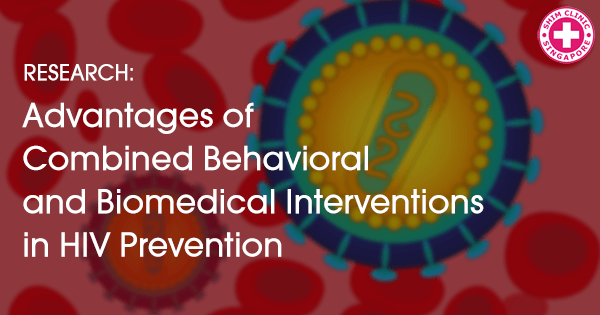It is has been researched and scientifically proven that for the HIV pandemic to be effectively controlled behavioral and biomedical interventions have to go hand in hand. The discovery of affordable and acceptable treatment of HIV led to the increase in the number of individuals being treated. This has seen the number of individuals contracting and who die of HIV reduced significantly, to around 4 million deaths from HIV and AIDs who are on treatment.
Understanding Biomedical and Behavioral Interventions
The application of both biomedical and behavioral interventions (counseling strategies) in the prevention of transmission of HIV has gained the International Clinical’s recommendations and support. The Joint United Nations Programme on HIV and AIDs set some goals to attain by the year 2020:
- About 90% of people living with HIV and AIDs should know and understand their status and they should be at a position to receive antiretroviral therapy.
- 90% of people undergoing treatment should be able to have long-lasting viral suppression thus showing the treatment is effective in their bodies.
They further suggested that if these goals are met and set periodically, HIV will be wiped out by the year 2030. The term behavioral intervention means the full knowledge, understanding and being responsible in regards to sexual activities, using preventive measures as an individual and any other parties involved throughout the anti-HIV treatment, and to ensure that one completes and is faithful to the recommended treatment.
Biomedical intervention would include the use of medication and technologies in order for the treatment to be more effective. This includes the treatment before and after HIV exposure and treatment aimed at controlling exposure.
The Interventions in Question
The study was carried out by Ricardo Kuchenbecker and published by Graduate program Epidemiology, School of Medicine, and Hospital denClinicas de Porto Alegre. The researcher aimed at studying the benefit of the behavioral and biomedical interventions in preventing HIV transmission. The researcher thus evaluated counseling activities as a way of encouraging behavior change to prevent HIV, administration of antiretroviral pre-exposure prophylaxis (PrEP) and antiretroviral post-exposure prophylaxis (PEP) for HIV as well as treatment of serodiscordant couples to prevent HIV transmission.
The following was in question after the research,
• Antiretroviral treatment as a preventive measure against HIV
• Treatment for post-exposure prophylaxis for HIV
• Treatment for pre-exposure prophylaxis for HIV
• Help based on counseling on possible changes in behavior in regards to exposure to HIV and AIDs
Using the given list as the main guidance into the research, the study reviewing material in U.S. National Library of Medicine (PubMed) Cochrane Central Register of Controlled Trials and Scientific Electronic Library Online (SciELO), was conducted within the months of January and May 2015.
The Results
The study showed that the chances of contracting HIV reduced by 62% after high-intensity counseling among adolescents. The reduction was 30% among adults counseled. However, low and moderate intensity counseling did not result in any reduction in the chance of contracting STD/HIV.
The study also identified 28 studies that evaluated different PEP strategies. The studies showed an 89% lower risk of HIV infection among those who received PEP, compared to those who did not. When it came to PrEP, the review found the risk of HIV acquisition reduced by 47%.
The researcher concluded that there is a need for more studies reviewing the importance of combined behavioral and biomedical interventions. By integrating behavioral and biomedical interventions, the chances of achieving complete suppression of HIV are heightened.
What We Think
Evaluating the effects of the various behavioral change and biomedical interventions available for the prevention of HIV/AIDS is very important because it will assist in learning what works best and therefore ensure stakeholders take advantage of what is working for further prevention of HIV/AIDS.
Read the original study here: http://www.scielo.br/scielo.php?script=sci_arttext&pid=S1415-790X2015000500026&lng=en&nrm=iso&tlng=en

